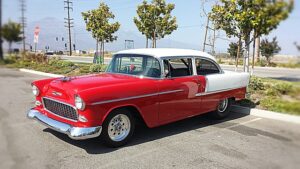Introduction
When it comes to vehicle maintenance, brake pads play a crucial role in ensuring safe and efficient braking. Over time, brake pads wear out due to the friction generated between them and the brake rotors. However, not all brake pads wear out at the same rate. In this article, we will explore which brake pads tend to wear out first and the factors that contribute to their wear.
Types of Brake Pads
Before delving into which brake pads wear out first, it’s important to understand the different types of brake pads available. The most common types include organic brake pads, semi-metallic brake pads, and ceramic brake pads.
Organic Brake Pads: These pads are made from a mixture of organic materials, such as rubber, glass, and resin. They are generally softer and quieter compared to other types but tend to wear out faster.
Semi-Metallic Brake Pads: Semi-metallic brake pads are composed of a blend of metal fibers, such as steel, copper, or iron, mixed with organic materials. They offer better heat dissipation and durability but can be noisier and generate more brake dust.
Ceramic Brake Pads: Ceramic brake pads are made from a combination of ceramic fibers, bonding agents, and fillers. They provide excellent braking performance, produce less noise, and generate minimal brake dust. However, they are usually more expensive than other types.
Factors Affecting Brake Pad Wear
Several factors influence the rate at which brake pads wear out. These factors include driving habits, vehicle weight, braking style, and the type of brake pad material used.
Driving Habits: Aggressive driving, such as frequent hard braking or riding the brakes, can significantly accelerate brake pad wear. On the other hand, smooth and controlled braking can help prolong their lifespan.
Vehicle Weight: Heavier vehicles exert more force on the brake pads, causing them to wear out faster. SUVs and trucks, for example, may require more frequent brake pad replacements compared to smaller cars.
Braking Style: The way a driver applies the brakes also affects pad wear. Gradual and controlled braking puts less stress on the pads, while sudden and harsh braking can accelerate their deterioration.
Brake Pad Material: As mentioned earlier, different brake pad materials have varying wear rates. Organic brake pads tend to wear out faster due to their softer composition, while semi-metallic and ceramic brake pads offer better longevity.
Which Brake Pads Wear Out First?
Based on the factors mentioned above, organic brake pads generally wear out first compared to semi-metallic and ceramic brake pads. Their softer composition and tendency to generate more friction during braking contribute to their faster wear rate. However, it’s important to note that the actual lifespan of brake pads can vary depending on the factors mentioned earlier and individual driving conditions.
Conclusion
In conclusion, the type of brake pad material used plays a significant role in determining which brake pads wear out first. Organic brake pads, being softer and generating more friction, tend to wear out faster compared to semi-metallic and ceramic brake pads. However, it’s essential to consider other factors such as driving habits, vehicle weight, and braking style, as they also influence the rate of brake pad wear. Regular inspection and maintenance of brake pads are crucial to ensure optimal braking performance and safety.
References
– Brake Pad Warehouse: www.brakepadwarehouse.com
– Car Bibles: www.carbibles.com
– AutoZone: www.autozone.com











